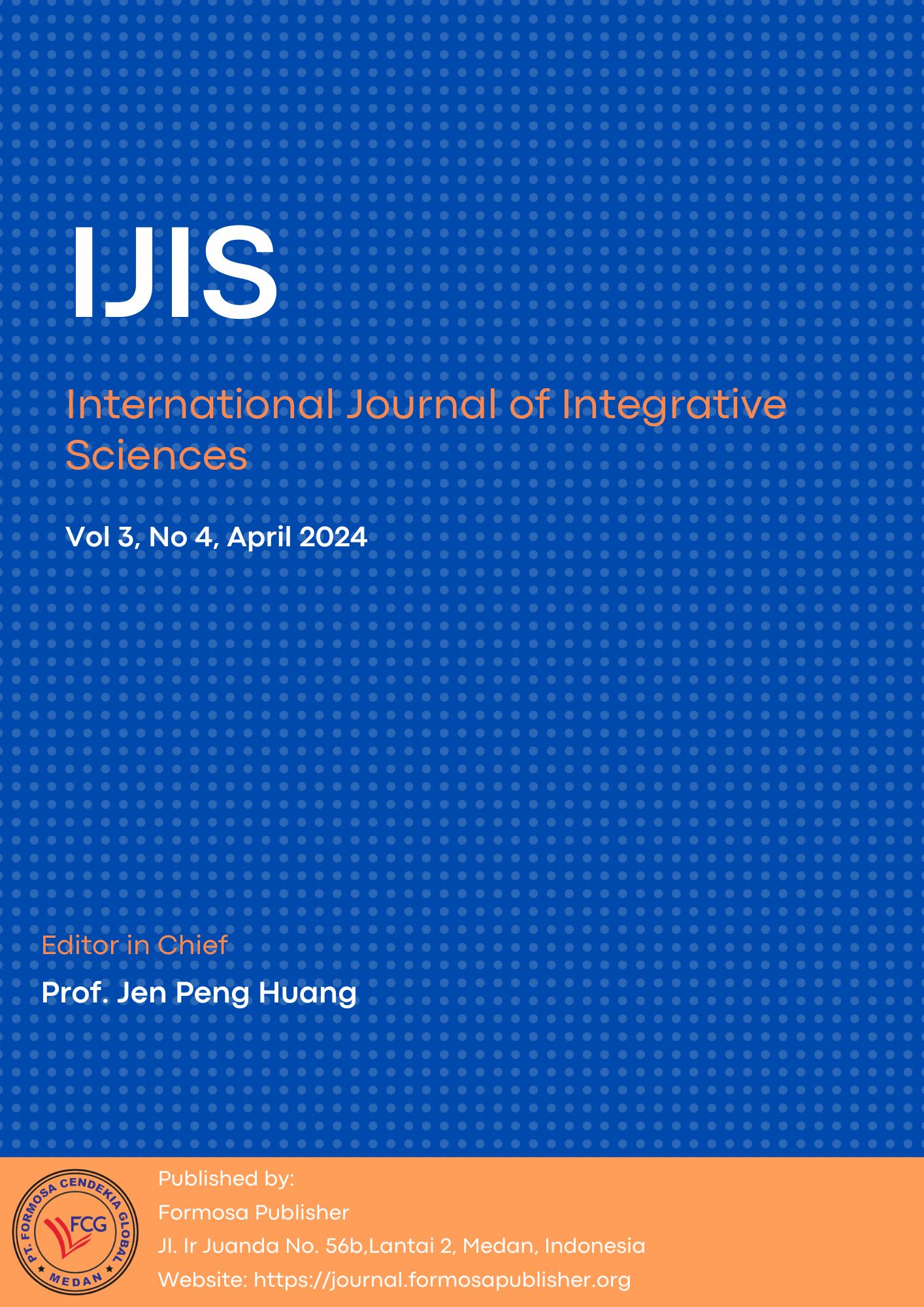Modern Medicine and Pharmaceutics
DOI:
https://doi.org/10.55927/ijis.v3i4.8225Keywords:
Personalized Medicine, Genomic Medicine, ImmunotherapyAbstract
Modern Medicine and pharmaceuticals have made tremendous strides in enhancing the healthcare and quality of life of people worldwide. This summary explores the key traits and trends in these fields. In recent decades, current medications have witnessed a paradigm shift toward personalized healthcare. Improvements in genomics, proteomics, and record analytics have paved the way for precision medication and tailoring treatments for an individual's genetic makeup. This technique enhances treatment efficacy while minimizing aspect consequences, marking a significant departure from the one-size-fits-all approach. Pharmaceutical research has experienced a revolution with the advent of biotechnology. Biopharmaceuticals, along with monoclonal antibodies and gene treatment plans, have emerged as powerful tools for the fight against formerly untreatable illnesses. Their ability to target specific molecules or genes has opened new frontiers in cancer treatment, uncommon illnesses, and autoimmune diseases. Furthermore, pharmaceutical enterprises have embraced virtual technologies. AI-pushed drug discovery, in silico medical trials, and telemedicine reshape the drug development pipeline and improve the care of affected persons. In particular, telemedicine has gained prominence, presenting available healthcare offerings and far-flung tracking. However, these advancements have moral and regulatory demands. Privateness issues, information protection, and equitable access to present-day remedies remain essential issues. The need for strong moral frameworks and regulatory oversight is paramount
Downloads
References
Belis M. (February 2012). History of Aspirin, handy from: http://inventors.about.com/study/inventors/blaspirin.htm (achieved on 25.02.2012)
Böhm H. J., Klebe G., Kubinyi H. (2002). Wirkstoffdesign: Der Weg zum Arzneimittel, Spektrum Akademischer Verlag, ISBN 3-8274-1353-2, Heidelberg, Germany
Derosne, J. F. (1803). Memoire sur I’narcotic, Annalen. Chim., Vol.45, pp. 257-285
Drews, J. (2000). Drug Discovery: A Historical Perspective, Science, Vol.287, (17 March 2000), pp. 1960-1964, connected to the internet ISSN 1095-9203
Gerhardt, C. F. (1853) Untersuchungen über wither wasserfrei organischen Säuren, Ann. Chem. Pharm., Vol.87, pp. 149-179
Global Market (2012) handy from http://computer network.prlog.org/10124036-worldwide drug-retail-forecast-to-2012.html (achieve on 25.02.2012)
Grabley, S. & Thiericke R. (1999). Drug Discovery from Nature, Springer-Verlag, ISBN 3-540- 64844-5, Heidelberg, Germany
GSK History (February 2012). Available from http://computer network.gsk.com/about/annals.htm. (achieved on 25.02.2012)
McLagan, T. J. (1876) The Treatment of severe Rheumatism accompanying Salicin, Lancet, Vol. 1, pp. 342-343 & 383-384.
Merck Group History (February 2012) handy from http://computer network.Merck.de/en/guest/experiences/history.html (achieved on 25.02 2012)
Newman, D. J. & Cragg G. M. (2002). Natural Products as Drugs and Leads to Drugs: The Historical Perspective, In Natural Product Chemistry for Drug Discovery, A. D. Buss & M. S. Butler, (Ed.), 3-27, RSC Publishing, ISBN 978-0-85404-193-0, Cambridge, UK
Nicolaou, K. C. & Montagnon, T. (2008). Molecules that Changed the World, Wiley-VCH GmbH & Co.KGaA, ISBN 978-3-527-30983-3, Weinheim, Germany
Pelletier, P. J. & Caventou, J. B. (1820). Recherches Chimiques sur les quinquinas, Annalen Chimiques Physik, Vol.15, pp. 289-318
Pelletier, P. J. & Magendie, F. (1817) Recherches Chimiques et Physiologique sur I’ ipecacuanna, Annalen Chimiques Physik, Vol.4, pp. 172-185
Pfizer History (February 2012) handy from http://computer network.pfizer.com/about/record/history.jsp, (achieved on 25.02.2012) Piria, R. (1839). Recherches sur la Salicine et les produits qui en’ de’rivent, C. R. Acad. Sci,Vol.8, pp. 479-485
Roth, G. Y., Brookes, K, Lowe, D. B. (2010). Top 20 Pharma report, accessible from http://computer network.contract pharma.com/issues/2011-07/view_features/the-top-20- drug associations/ (achieved on 25.02.2012)
Seguin, M. A. (1814). Premier Me’moire sur I’narcotic, Annalen Chim, Vol.92, pp. 225-245
Sertürner, F. (1805).Auszuge aus briefen an cavern Herausgeber (a) Säure im Opium. (b) Ein deres Schreiben von Ebendenselben. Nachtrag zur Charakteristik der Saüre imOpium, Journal der Pharmazie für Artze, Apotheker und Chemiscten von D. J. B.Trommsdroff, Vol.13, pp. 29-30
Sertürner, F. (1806). Darstelling der reinen Mohnsäure (Opium säure) nebst einer Chemischen Untersuching des Opium mit vorzüglicher Hinsicht auf einen darin neu entdeckten stoff und wither dahin gehörigen Bemerkungen, Journal der Pharmazie jacket Artze, Apotheke, Vol.14, pp. 47-93
Sertürner, F. (1817). Uber criminal lawyer for the government Morphium, eine neue salzfähige Grundlage, und wither Mekonsäure, als Hauptbestandtheile des Opium, Gilbert’s Annalen der Physik, Vol.25, pp. 56-89
Top Ten Selling of the World (2011) vacant from http://computer network.med india.net/health_statistics/health_facts/top-ten-business drugs. htm#ixzz1t8ck78Zv (achieve on 25.02.2012)
Wright C. R. A. (1874) On the Action of Organic Acids and their Anhydrides on the Natural Alkaloids: Part I, Journal of Chemical Society, Vol.27, pp. 1031-1042
York, P. (2007). Design of portion of drug or other consumable form, In: Aulton’s Pharmaceutics: The Design and produce of Medicine, 3rd Ed, M. E. Aulton, (Ed.), 4-7, Elsevier Limited, ISBN 978-0-443-10108- 3, London, UK
Downloads
Published
How to Cite
Issue
Section
License
Copyright (c) 2024 Rehan Haider, Asghar Mehdi, Anjum Zehra, Geetha Kumari Das, Zameer Ahmed, Sambreen Zameer

This work is licensed under a Creative Commons Attribution 4.0 International License.

















